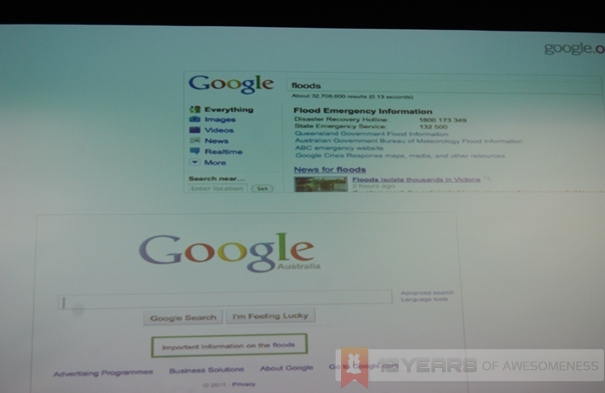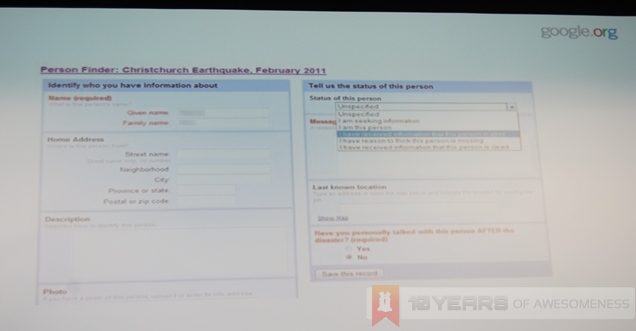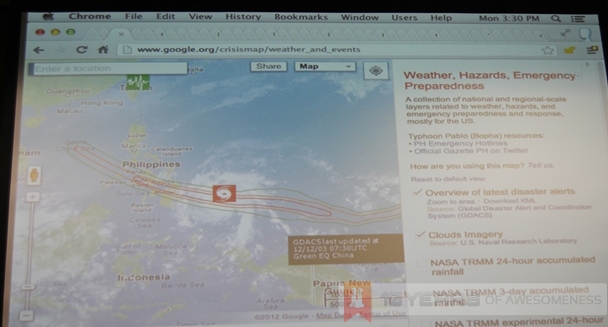Not many are aware of it, but Google has a Crisis Response team as part of its Google.org site, the not-for-profit arm of the company. Comprised of dedicated Googlers based around the world, the team is on call round the clock during natural disasters to provide the latest updates and push them to the Google Crisis Response page and, if necessary, Google’s home page.
Of course, Google’s engineers have now devised powerful scripts to automatically push out these updates, compared to when they first started out in 2010. However, staff are still required to co-ordinate the movement during each disaster – via Google Hangouts, of course.
At Google’s “The Next Billion” event, we had a glimpse of how the Crisis Response team handles a natural disaster, and even got more than we bargained for: as Google.org engineer Anthony Baxter was presenting, other Crisis Response team members were being rounded up from around the world to prepare for the Bopha Typhoon that was making its way to the Philippines.
The Crisis Response team’s mission is simple: to deliver accurate, relevant and credible information to the public, leveraging Google’s reach and scale, for all emergency events affecting life and property as fast as possible across many Google products.
One of the most frustrating scenarios that happen during a natural disaster is a lack of information that is readily available not just for friends and family of those caught in the disasters, but for those in the deep end as well. Information regarding the disaster becomes fragmented; government agency websites crash due to high traffic, leaving those affected without proper information to help themselves.
Google’s Crisis Response page helps overcome this situation. The site pulls information from government websites, emergency services, local organisations and agencies as well as the media and collates them into a quick-loading and information-rich site, powered by Google’s servers. In addition, news articles and videos related to the disaster are also pinned on Google Maps (both Satellite and Normal modes), making it extremely handy to find out highly localised information. News and messages on disasters will appear on local Google front pages in affected areas.
The team also has a feature called Person Finder, which shares its application programming interface (API) with emergency services to identify people in affected areas. Person Finder is particularly useful in the aftermath of a disaster, when loved ones get separated. Originally built in the aftermath of Haiti earthquake in 2010, it collates missing person registries from multiple websites under a common format. On its landing page for specific disasters, responders can select between two options: whether they are looking for someone, or they have specific information about someone.
Another feature from the Crisis Response team is Crisis Maps. Activated in the event of a disaster, it adds a layer to Google Maps in affected areas, with icons to display critical information such as shelter zones, emergency public transport, traffic information, as well as flooded areas. Again, the information is pulled from relevant agencies. This layer is also easily shared and embedded, which allows for greater awareness of the information.
Baxter iterates that the Crisis Response team works as hard as they can to allow the information it has to be shared freely and easily, for the benefit of all. Its services have already contributed to saving millions of lives, as well as providing organisations and emergency response teams powerful tools in its relief efforts. As far as corporate social responsibility efforts go, Google’s Crisis Response team is definitely going the right path.
Follow us on Instagram, Facebook, Twitter or Telegram for more updates and breaking news.









